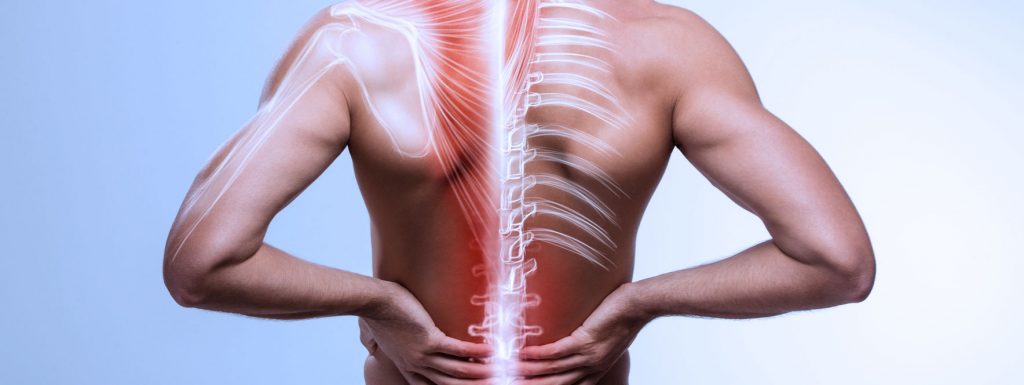Article reviewed and approved by Dr. Ibtissama Boukas, physician specializing in family medicine
According to figures, one in two French people today suffers from back pain. An evil which even if it does not have serious consequences on health can be very disabling on a daily basis. Of course, not all back pain is created equal. Indeed, some can be more or less serious while others can be benign. This is particularly the case of minor intervertebral derangement syndrome, better known by its acronym DIM.
This article gives you more details about this syndrome.
Definition
Concept created by Dr. Robert Maigne, minor intervertebral derangement syndrome refers to all pain of vertebral origin, of a mechanical and reflex nature. In fact, it is not an anatomical lesion, but a low intensity facet lesion or a disc joint lesion. Indeed, the syndrome of minor intervertebral derangement can only sit at the level of the mobile elements of the spine or the vertebral mobile segment.
In other words, its action is generally only concentrated at the level of the intervertebral discs, the interapophyseal joints as well as the ligaments and musculature.
More specifically, the minor intervertebral derangement syndrome is the consequence of a soft tissue injury and/or a musculolumbar sprain. To better understand the concept, it is important to remember that the human body is made up of 33 vertebrae connected together from the upper part to the lower part, namely:
- The cervical vertebrae which constitute the cervical spine
- The dorsal vertebrae making up the dorsal spine
- The lumbar vertebrae giving the Lumbar spine
- The sacral vertebrae which form the sacrum
- The coccygeal vertebrae which form the coccyx.
Causes
As we mentioned earlier, the minor intervertebral disorder is the result of a benign dysfunction at the level of the vertical mobile segment. This area is particularly stressed since it is very mobile.
In details, the causes of the occurrence of the syndrome of minor intervertebral derangement are many. Apart from identified pathology, it occurs in particular because of a bad postural habit. Indeed, a bad sitting posture during the day or a bad way of standing is a factor that can promote back pain.
Among the causes of minor intervertebral disturbance, we find false movements or even functional overload or trauma. Lack of physical activity, muscle weakness, obesity, etc. are also factors that can induce long-term DIM.
Symptoms of the disease
Minor intervertebral derangement syndrome is characterized by a series of referred pains related to irritation of the spinal nerves and disorders of the posterior vertebral interapophyseal joint. Among the symptoms we can cite:
- Dorsal pain in the shoulders which can occur frequently in seamstresses, typists, computer specialists, ironers or even assembly line workers.
- Pain in the chest (precordial pain) which can be particularly bothersome during a deep inspiration.
- Abdominal, urological or gynecological pseudo-visceral pain.
- La pubalgia.
Diagnostic
In most cases, minor intervertebral derangement syndrome remains unrecognized for many years. In fact, the diagnosis is often difficult to make since the clinical signs are very difficult to interpret. Added to this is the multiplicity and location of the various symptoms in addition to the lack of knowledge on the subject. Moreover, the pain described by patients is often the cause of poorly adapted medical care or even unnecessary surgical interventions.
To be able to detect a minor intervertebral disorder, a clinical examination aimed primarily at determining the cause of the pain must be carried out. This is usually a manual palpatory examination.
In principle, the pain is detected by palpation and pinch-rolling of the trapezius more specifically at the level of the angular of the scapula and interscapular D5-D6. This palpation makes it possible to evaluate the mobility of the cervical spine by following the Maigne star diagram.
Then, flexion, extension, right rotation, left rotation, right inclination and left inclination are also used to check the different movements at the level of the cervical spine.
Finally, the diagnosis goes through a dorsal decubitus which allows to palpate-roll the cervical spine. This aims to establish whether or not there is pain at the level of C4-C5 and C5-C6 or C6-C7.
The maneuvers used by the doctor
Concretely, the doctor relies on 3 maneuvers to affirm the benign, mechanical nature of the pain and above all to determine the presence or not of degenerative lesions:
- Axial pressure on the spinous bone of a vertebra
This maneuver consists of applying slow pressure on the vertebra to arouse deep pain or increase the pain originally caused at the level of the floor that is suffering.
- Pressure-friction on the posterior joints
Thanks to an elective movement of forced rotation to the right then to the left on a vertebra, this maneuver aims to exert pressure on the spinous of the region examined in order to give a precise meaning of the manipulation to be recommended.
- Pressure on the interspinous ligament
For information, the interspinous ligament is very sensitive to pressure compared to the others. Pressure in this area therefore aims to identify vertebral instability or what is commonly called hypermobility.
In parallel with this palpatory examination, a differential diagnosis can also be carried out to establish that the pain is not related to a cervico brachial neuralgia or an articular or periarticular pathology of the shoulder.
Finally, to confirm or deepen the diagnosis, additional examinations such as an X-ray or an MRI (magnetic resonance imaging) may also be recommended. These are intended to highlight degenerative lesions, or failing to exclude them.
Treatment
If a minor intervertebral disorder does not cause pain severe enough to impact daily life, it is important to know that an untreated IMD can cause disc protrusion (or other discopathy), especially during physical exertion. It is therefore important not to take it lightly.
In detail, the management of pain can be based in particular on spinal manipulation. This must absolutely be carried out by a doctor with a degree in manual medicine or another specialist (physiotherapist, osteopath, chiropractor, etc.) after a complete pre-manipulative clinical assessment and a well-established diagnosis.
As a general rule, the symptoms can disappear very quickly thanks to work on the affected vertebrae. It even sometimes happens that a single session is enough to achieve complete healing. Nevertheless, in some patients, 2 to 3 or more sessions may be necessary before experiencing significant relief. Be careful though, unsuitable manipulations can accentuate the pain.
A rehabilitation program can also be added to these spinal manipulative treatments. This is generally based on decontracting massages, kinesitherapy (physiotherapy) as well as gentle axial stretching and strengthening of the cervical musculature. The main purpose of this rehabilitation program is to correct posture, especially when sitting, and to relieve the back.
The injection of anti-inflammatories can also be proposed.
References
- https://www.sofmmoo.org/dg_mecanisme_dim.htm#:~ : text=R%C3%A9sum%C3%A9%3A%20L’% C3%A9tude%20des%20douleurs, r%C3%A9versibles%20par%20la%20th%C3%A9rapeutique%20manipulative.
- https://orthopedie-lyon-croix-rousse.fr/images/cours-diu/DIU%20DU%20SPORT%20LYON%202018%20S%20MAIGNE%20BFAUT%20IL%20MANIPULER%20LE%20RACHIS%20DU%20SPORTIF.pdf
- https://fr.wikipedia.org/wiki/D%C3%A9rangement_intervert%C3%A9bral_mineur# : ~ : text=Le%20d%C3%A9rangement%20intervert%C3%A9bral%20mineur%20est, Douloureux%20Intervert%C3%A9bral%20Mineur%20ou%20DDIM.
- https://www.sofmmoo.org/dg_mecanisme_dim.htm
- https://smallseotools.com/fr/plagiarism-checker/ 98%
If you liked the article, please share it on your social networks (Facebook and others, by clicking on the link below). This will allow your relatives and friends suffering from the same condition to benefit from advice and support.


